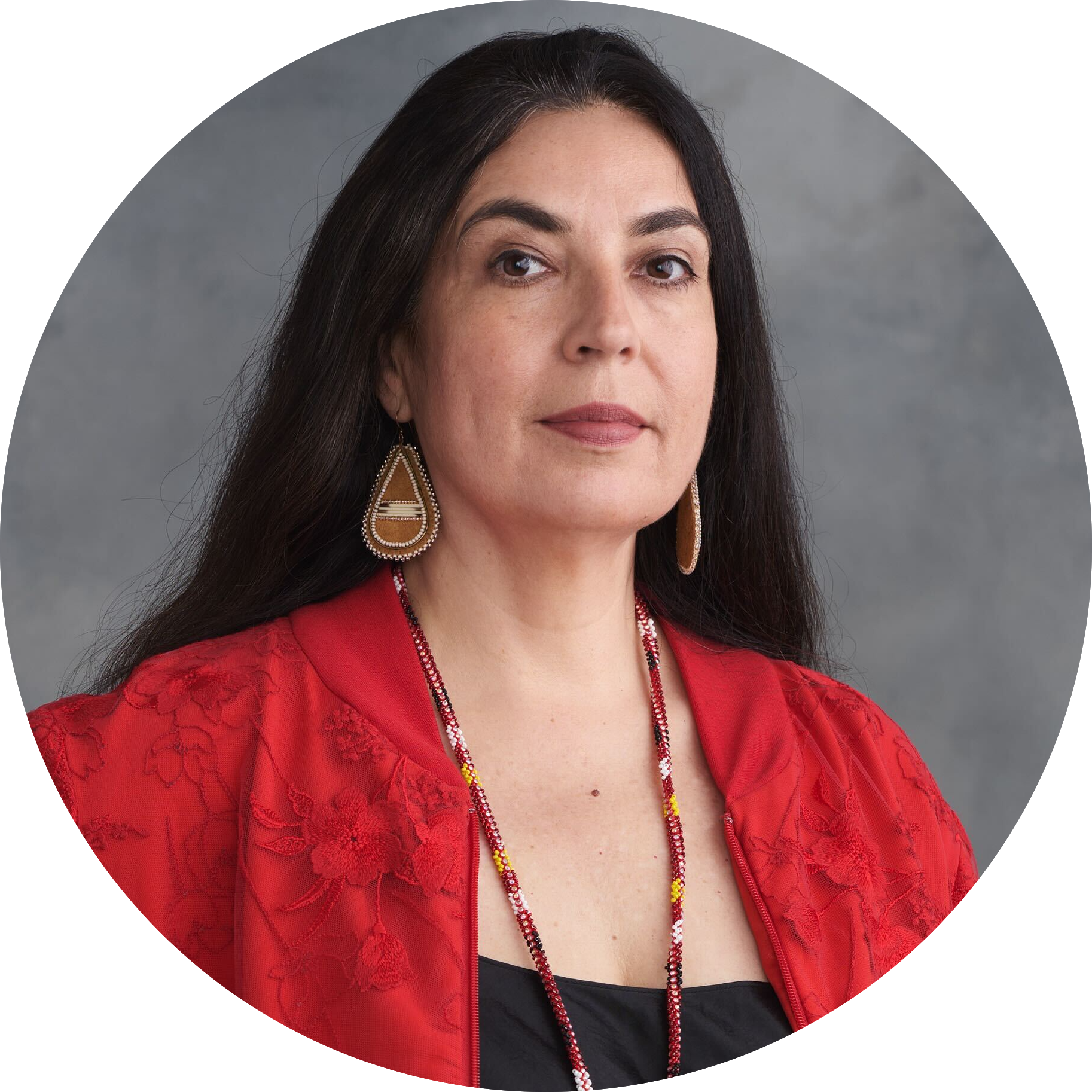
Alberta oil and gas companies could avoid cleanup costs by installing solar panels: government report
An Alberta government-commissioned report suggests oil and gas site companies may be able to install...
Every day streams of toxic waste pour into Burrard Inlet, home to Canada’s largest port. These waters, at the northern extent of Vancouver, have nourished Tsleil-Waututh Nation (səlilwətaɬ) for millennia. Today, they are so polluted that public officials say shellfish are no longer safe to eat and people are regularly barred from swimming at local beaches.
There’s the cocktail of contaminants rain washes in from city streets. The sewage that pours in during big storms. And the mix of heavy metals and toxic chemicals the B.C. government allows corporations to dump into the water every single day: oil and grease, lead, copper and myriad chemicals melding with cloudy wastewater that can threaten marine life.
That’s just the pollution we know about. Video obtained by The Narwhal, which shows coal spilling off the side of a ship as it’s being loaded at Neptune Terminals late last year, raises questions about the frequency of spills and leaks along Burrard Inlet — and how often they go unreported.
Once home to lush estuaries and beaches plentiful with healthy food, the inlet is now a hub for global trade, facilitating the export of coal, petroleum products, potash and mountains of grain through the Port of Vancouver. It’s undergone a dramatic transformation that has unfolded through colonization. And, although the contamination from industry and surrounding cities is largely hidden beneath the water’s surface, it has had severe consequences.
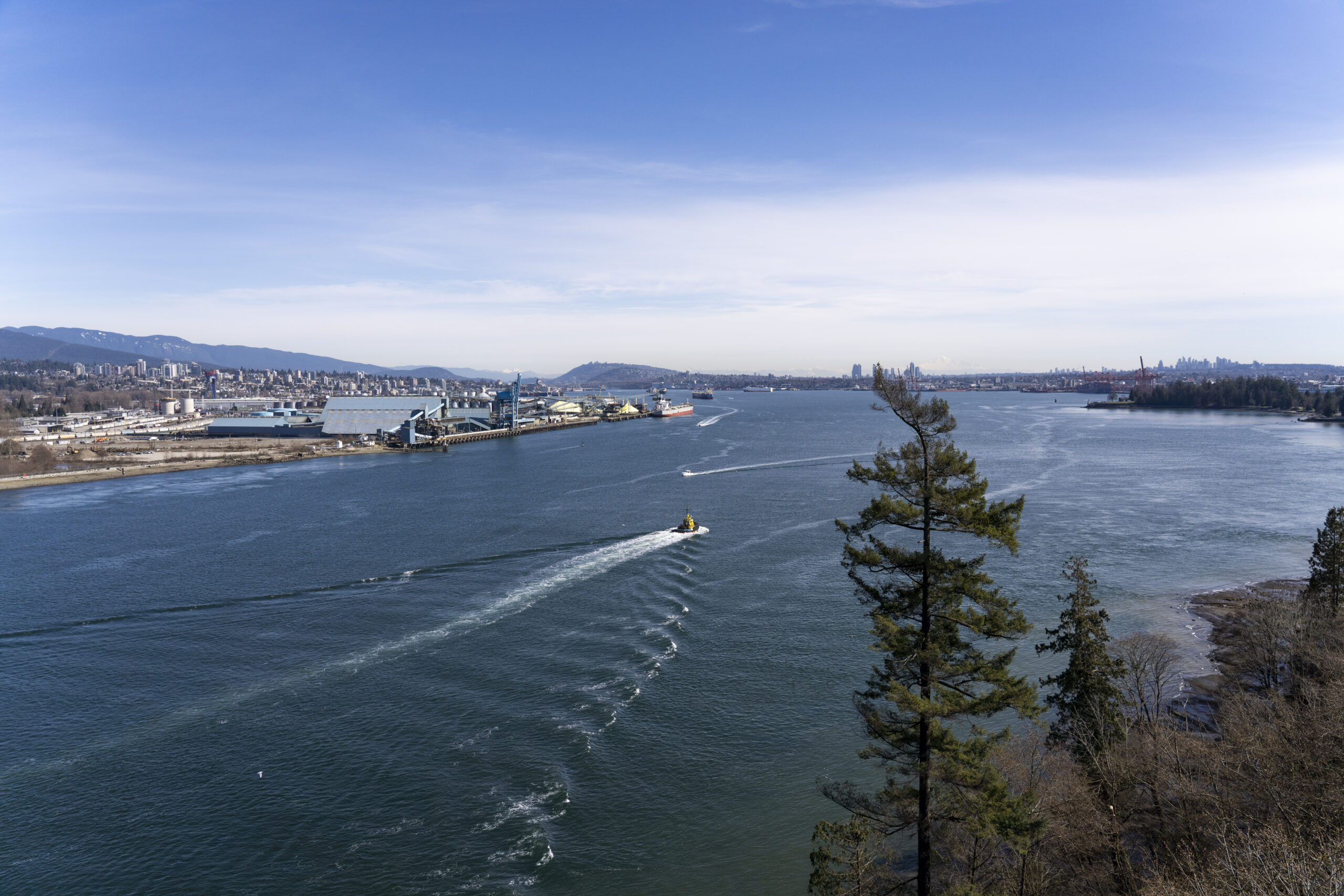
All told, 700 different contaminants were found in Burrard Inlet between 1971 and 2016, according to a report by Tsleil-Waututh Nation. Hydrocarbons cling to the seafloor. Pesticides taint fish and shellfish tissue. Heavy metals, dissolved in the water, pervade the whole system. At least 24 of these pollutants are found at levels that can make it dangerous to harvest food from the inlet at any substantial rate, according to the report.
But Tsleil-Waututh Nation is intent on rewriting the rules that allowed this waterway to wither.
“It’s always sustained our people, the inlet, and that was just obliterated,” Gabriel George, a member of Tsleil-Waututh Nation and director of the nation’s treaty, land and natural resources department, tells The Narwhal.
“If you could have a time capsule from the 1750s to now, you’d think you’re on another planet or something, in a toxic wasteland,” he says. “This was an old-growth, ancient cedar rainforest.”
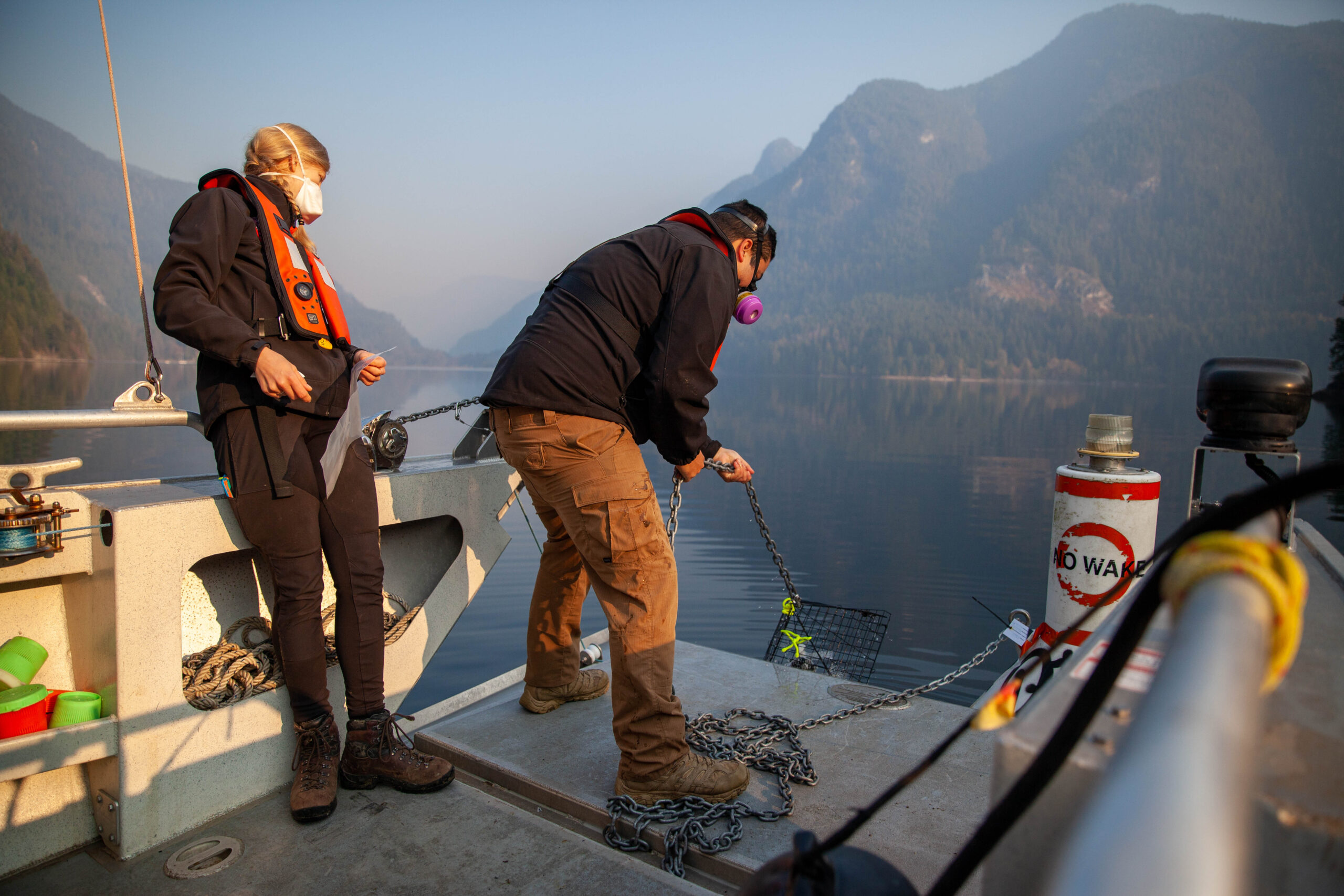
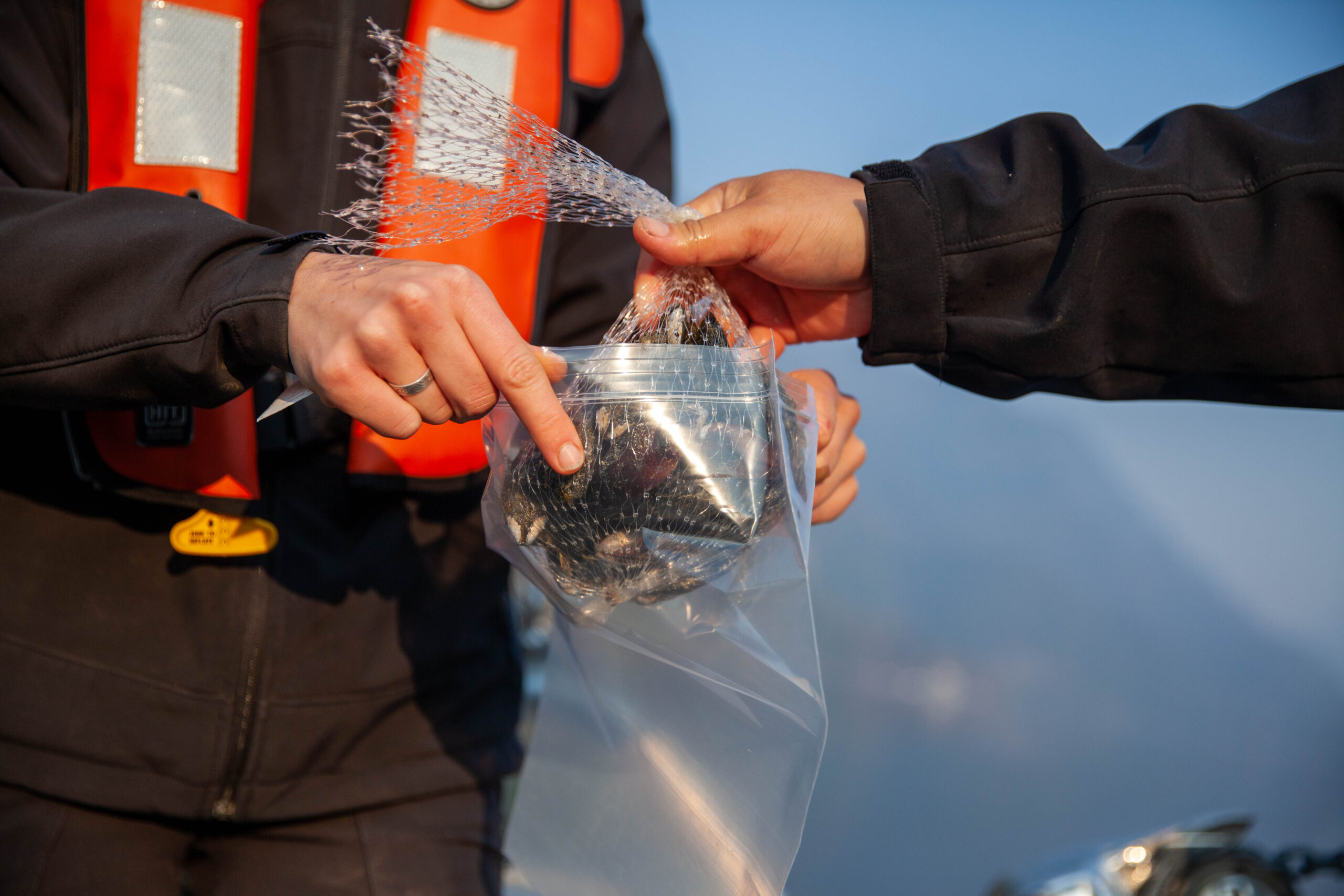
Over the past several years, Tsleil-Waututh Nation has led efforts to better understand the extent of the contamination, pulling together the most comprehensive picture yet of water quality in the inlet. At the same time, the nation worked closely with the B.C. government to establish new, more stringent water quality objectives that, if met, could set the stage for Tsleil-Waututh people to safely harvest seafood from the inlet once again.
It’s a groundbreaking policy co-developed by a First Nation and provincial government. The challenge now is enforcing it on the ground.
Alongside runoff from city streets and untreated wastewater that sometimes overflows from the region’s outdated sewer systems, the B.C. government has given 21 facilities the green light to release contaminated water into Burrard Inlet, according to a list of wastewater authorizations provided by the province. These include petroleum processing and shipping facilities, chemical manufacturers, concrete producers, an animal and fish rendering plant, a sugar refinery, a wastewater treatment plant, a shipyard and several bulk loading terminals where a range of products from coal to copper concentrate are shipped overseas. While some wastewater undergoes a degree of treatment, companies are not required to remove all contaminants before releasing it into the inlet.
The 21 facilities are just a piece of a much broader pollution picture that includes contaminated sites, historic pollution from facilities no longer operating, loading docks and terminals, ships, recreational boats and other facilities allowed to release wastewater either to the ground near Burrard Inlet or into a freshwater stream that flows into it.
In 1990, the B.C. government established provisional water quality objectives for Burrard Inlet, defining how clean the water should be to protect aquatic life, wildlife and recreation. Updating the objectives was the first of six priority actions laid out in Tsleil-Waututh Nation’s 2017 action plan to restore the inlet.
After years of work, Tsleil-Waututh Nation and the province jointly approved dozens of new water quality objectives for a range of contaminants in Burrard Inlet, including in False Creek, the outer, inner and central harbours, Indian Arm and Port Moody Arm. More stringent objectives were put in place for contaminants like arsenic, copper and mercury. And new objectives were established for contaminants of emerging concern such as flame retardants and 6PPD-quinone, a chemical released by tire rubber that can be toxic for fish. The new water quality objectives were set at levels to not only better safeguard aquatic life and recreation but also cultural practices and the harvest of wild foods.
A key challenge now is ensuring the wastewater that flows from industrial facilities into Burrard Inlet — and the associated permits — align with the new water quality goals.
The provincial government doesn’t have direct control over all sources of pollution in Burrard Inlet. Transport Canada and the Vancouver Fraser Port Authority, for instance, set environmental requirements for ships calling at the Port of Vancouver, such as restricting the release of untreated sewage.
But provincial wastewater authorizations are “the most direct application” of the water quality objectives, Anuradha Rao, a senior marine ecosystems specialist with Tsleil-Waututh Nation, tells The Narwhal. And, “there are some very obvious incongruencies,” she says.
One objective states there should be no oil or grease in the inlet.
“And, yet there are a number of authorizations that permit a certain volume of oil and grease to be discharged in the inlet,” Rao says.
Combined, oil giant Suncor Energy, bulk shipper PKM Canada Terminals, fuel supplier Parkland Refining and food waste recycler West Coast Reduction are authorized to release up to 69,575 cubic metres of wastewater containing as much as 629 kilograms of oil and grease in a single day. That’s roughly 100 bowling balls’ worth of oil and grease tumbling into the waters of Burrard Inlet.
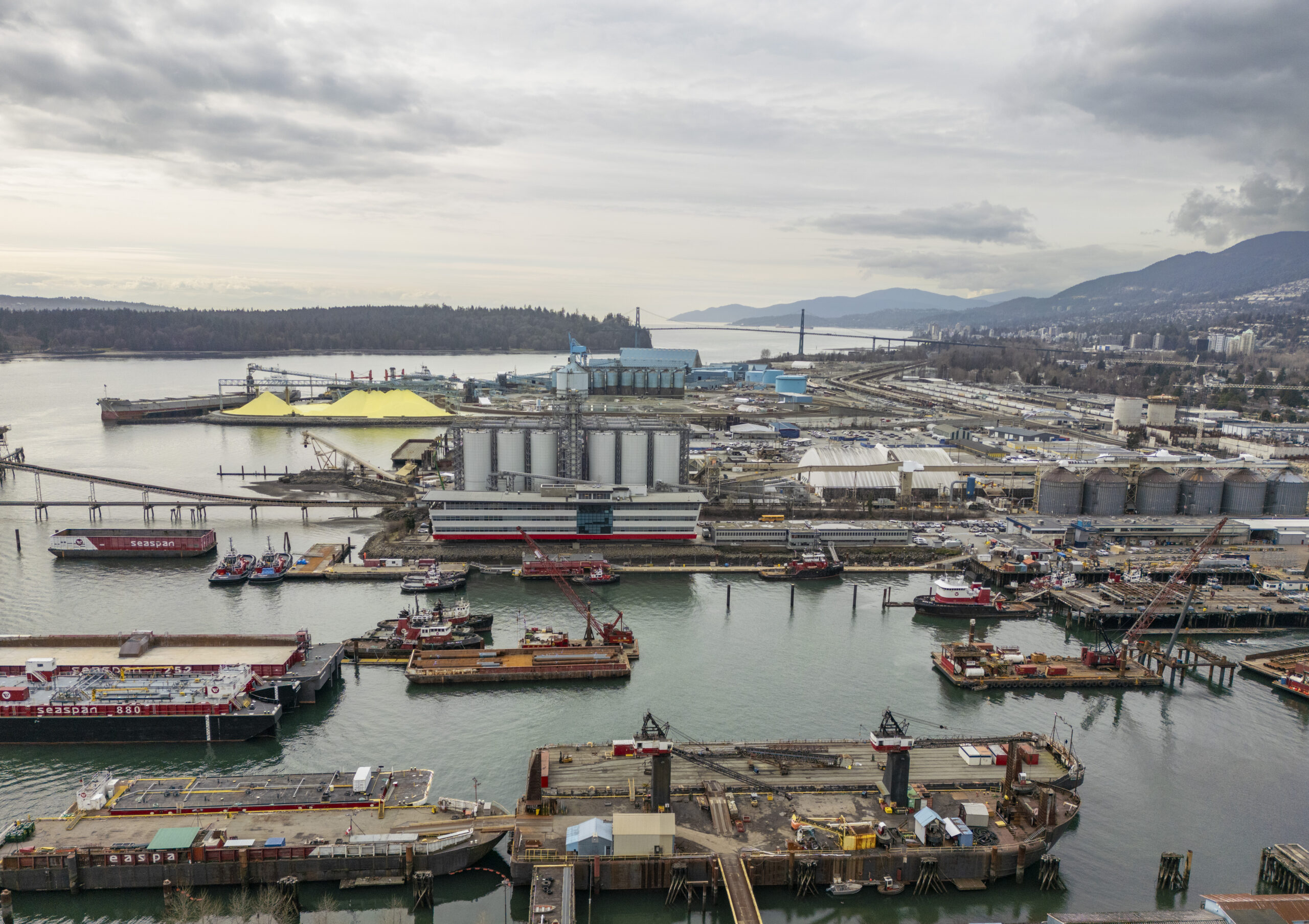
“It’s very clear that we need to better manage these authorizations in order to reduce the overall [pollution] levels,” Kate Menzies, natural resource planning manager for Tsleil-Waututh Nation, says in an interview.
The Narwhal reached out to Suncor, PKM Terminals, Parkland and West Coast Reduction for comment. Only West Coast Reduction responded before publication time.
In a statement, Jared Girman, the company’s director of government relations and strategic initiatives, noted the company’s “wastewater is treated on site and managed to the highest standards.”
Girman said West Coast Reduction supports the work being done by the Burrard Inlet water quality technical working group and “will continue to participate in this iterative process.”
In a statement to The Narwhal, a spokesperson for B.C.’s Ministry of Environment and Climate Change Strategy said the standards included in permits reflect the state of treatment and source control technology available at the time they were issued. When permits are reviewed, officials assess whether improved technology warrants updated contaminant limits.
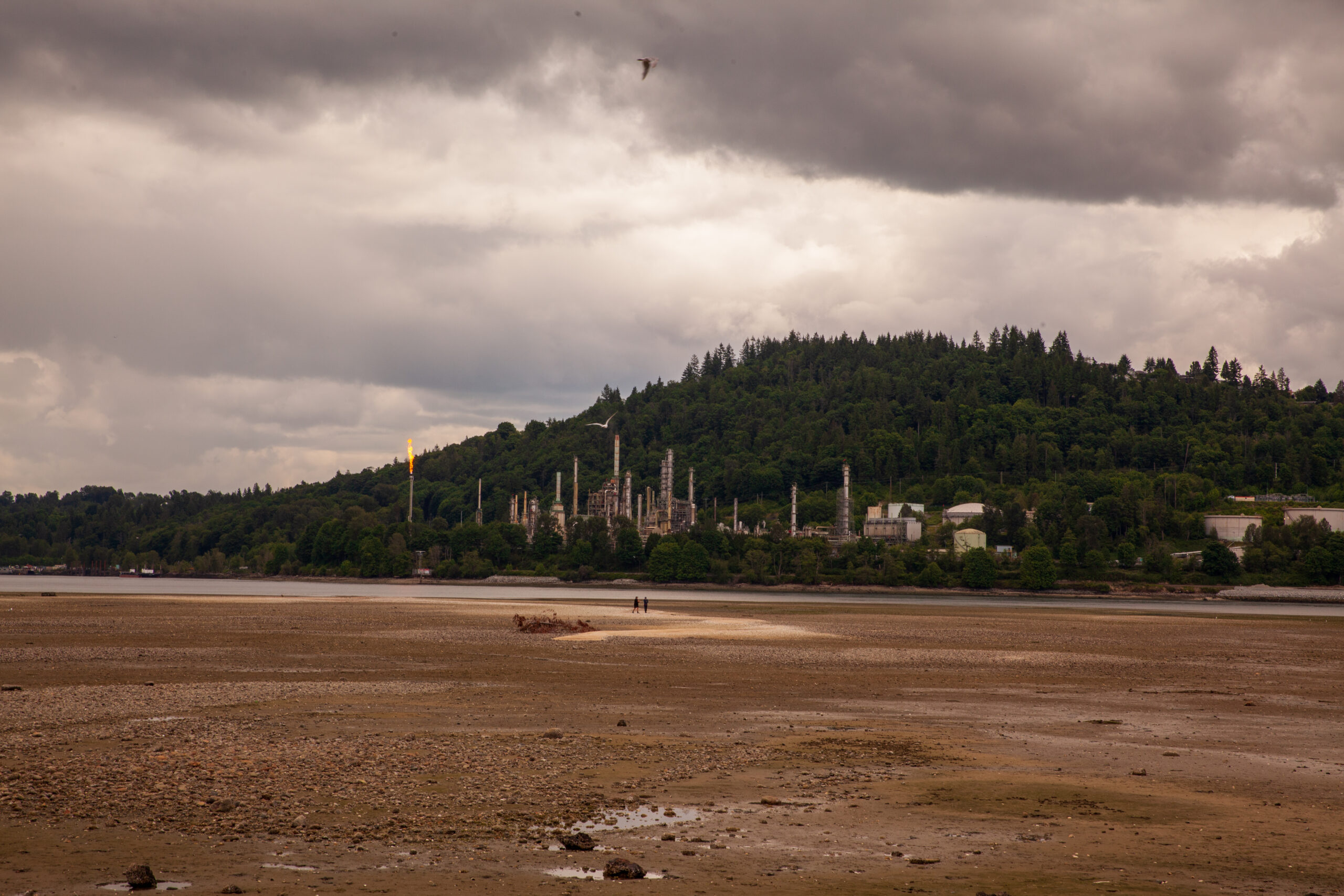
The province said it is working to bring permits in line with current policies and is prioritizing facilities with high environmental risks and companies that have applied for permit amendments. Permits for seven facilities authorized to release wastewater to Burrard Inlet have either been updated already or are in the process of being updated, the spokesperson said, adding other permits will have to be assessed to determine if updates are needed to protect the environment.
George, the director of the nation’s treaty, land and natural resources department, says ultimately, it’s a test of the province’s commitments to reconciliation.
“Rebooting those authorizations in a way that matches our values … will bring tremendous healing for Indigenous Peoples and for Tsleil-Waututh people, for Vancouverites, for Canadians,” he says.
Tsleil-Waututh Nation councillor Deanna George grew up on the shores of the inlet. As a child, she spent her weekends at the beach with her grandparents. She’d watch for water spurting up through the sand, a sure sign of clams, and spend hours swimming in the water.
“I remember you could dive underwater, you could see clearly,” she says.
Only a few years later, her sister started getting rashes from wading in the inlet to get in and out of their canoe as they trained for races. It changed in the “blink of an eye,” she adds.
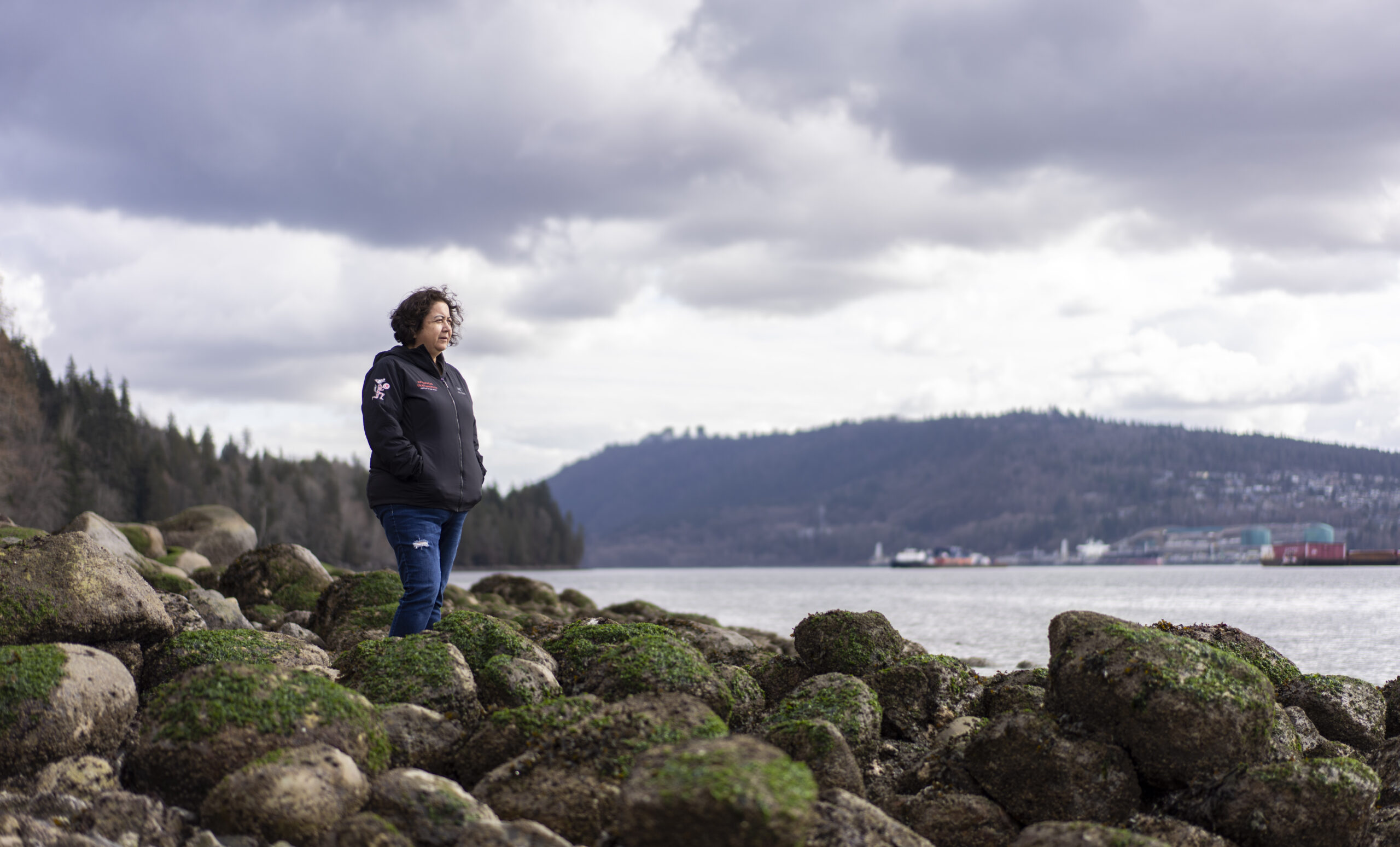
She remembers cringing listening to news coverage of a burst sewage pipe or a park closed because fecal coliform levels — bacteria from the excrement of humans and animals — were too high, and just hoping she and her sister didn’t tip during their next training session.
Years later, those weekends spent at the beach with her grandparents harvesting clams for dinner and swimming in the water are memories she can’t build with her own grandchildren.
Burrard Inlet — səl̓ilw̓ət in the hən̓q̓əmin̓əm̓ language — wasn’t always as it is now. Before colonization, before the surrounding cities and the Port of Vancouver, rivers coursing down the North Shore mountains could flow freely into wide estuaries. Each low tide revealed beaches laden with shellfish and shore crabs. Schools of herring spawned in thick forests of kelp. And whales were far more common than they are today.
The water was clean.
Only on rare occasions now can Tsleil-Waututh Nation harvest clams — from one small beach in a less developed area of the inlet — and only after diligent testing to ensure they’re safe to eat.
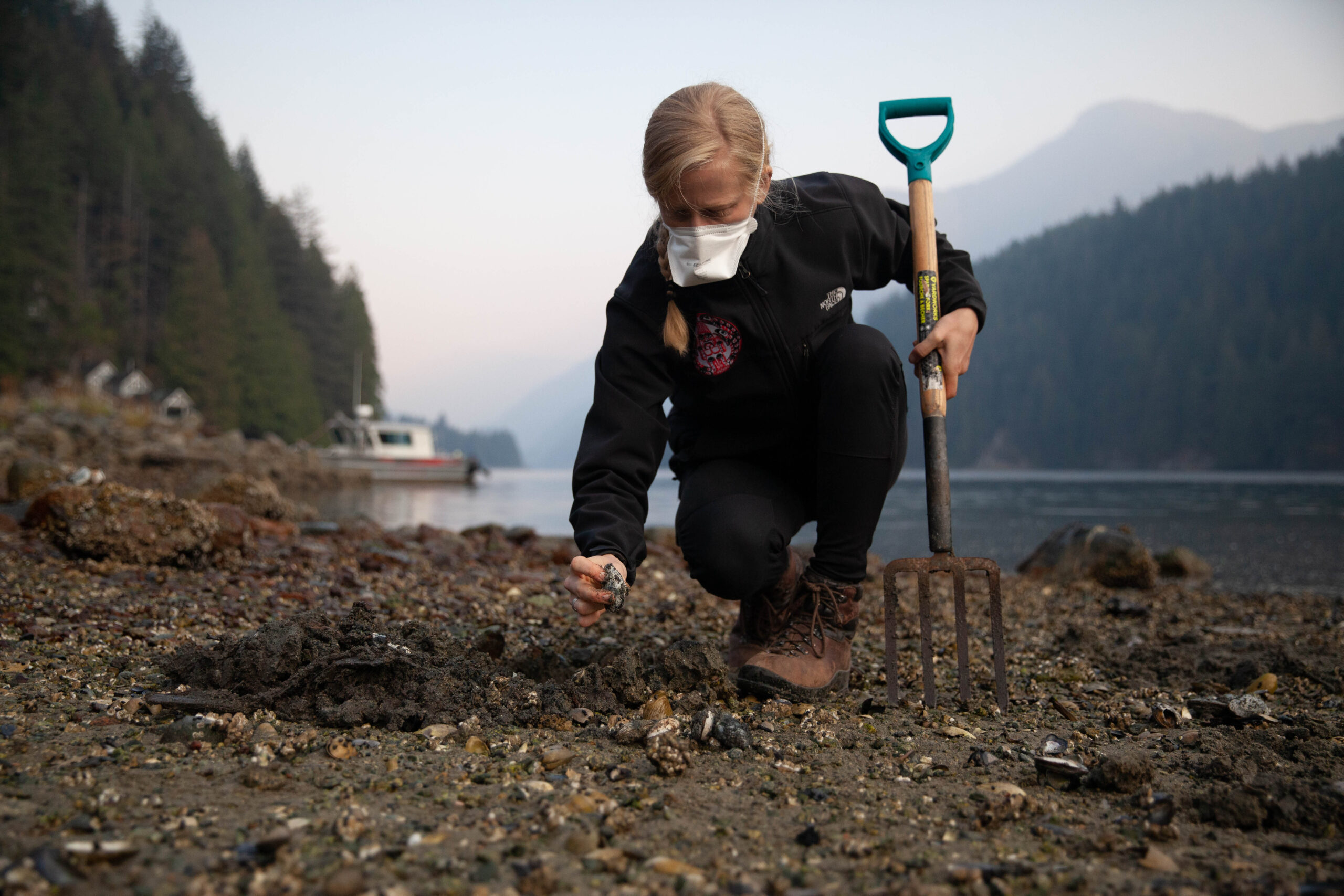
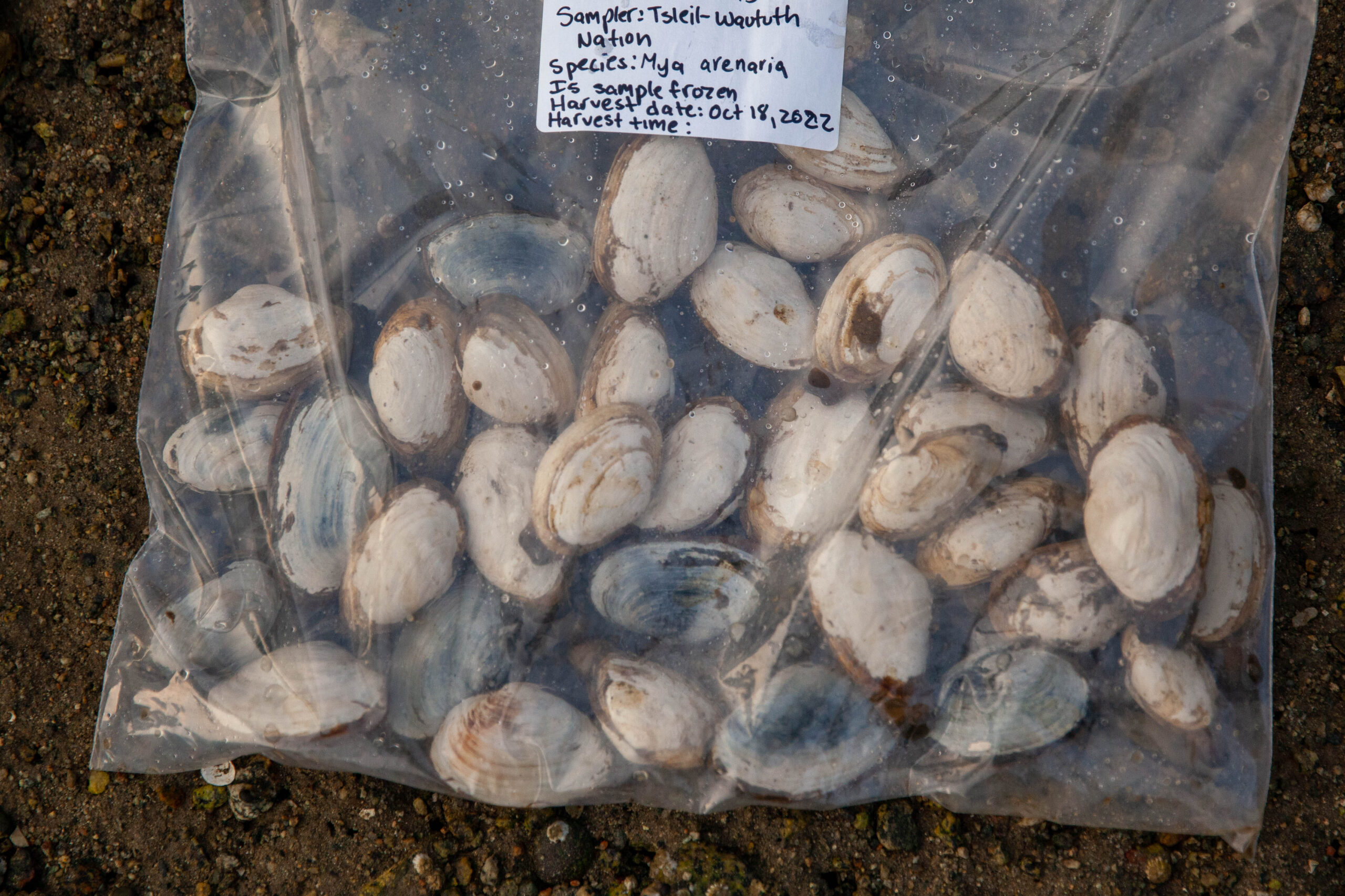
“The level of contamination or pollution in the inlet has already far surpassed any acceptable level,” Menzies says. Tsleil-Waututh really has no meaningful ability to exercise the right to harvest shellfish anymore, she adds.
Shellfish harvesting throughout the inlet has been closed since 1972 for public health reasons. Fecal coliform levels alone are high enough to keep it closed today, but dangerous bacteria are far from the only concerning contaminant in the inlet.
Polychlorinated biphenyls, or PCBs, for instance, are a group of industrial chemicals once used in a range of products from microscope oils to televisions and refrigerators. Canada banned the use of PCBs in 1977 and their release into the environment in 1985. But decades later, these toxic chemicals, which build up through the food chain, remain a major concern, both in Burrard Inlet and around the world. For endangered southern resident killer whales, for instance, PCBs are considered the “contaminant of greatest concern,” according to the joint B.C. government Tsleil-Waututh Nation report on Burrard Inlet water quality objectives. The pollutants build up through the food chain and accumulate in whales’ bodies, causing reproductive issues and weakening their immune systems.
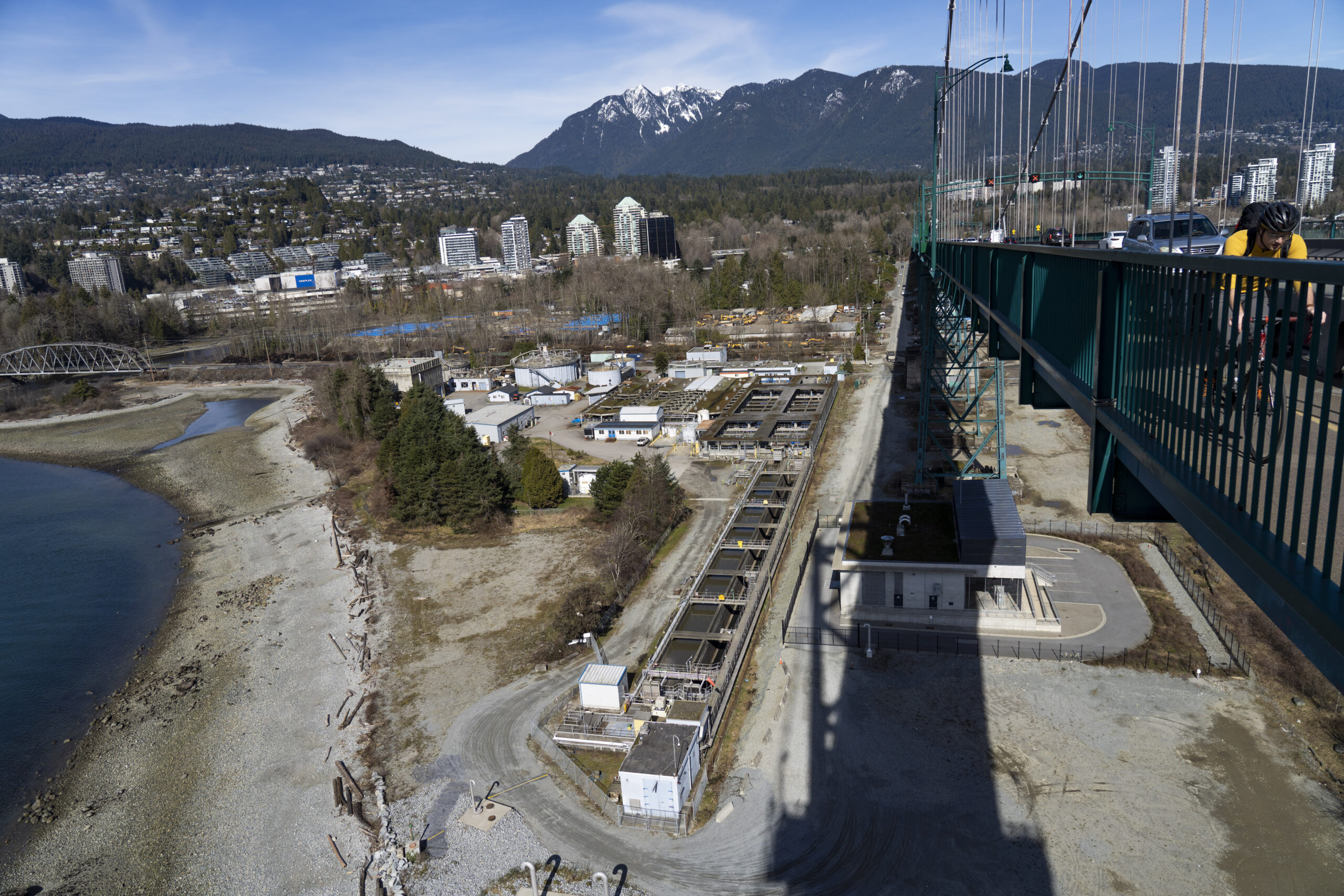
PCBs, heavy metals and numerous other contaminants have also settled in sediment at the bottom of the inlet, which can make cleaning up historic pollution even more of a challenge.
“Trying to dredge it up or remove it can also mobilize it, like lead to more of it potentially being available,” Amanda Giang, assistant professor in the Institute for Resources, Environment and Sustainability at the University of British Columbia, explains.
And it’s not just a matter of cleaning up historic contamination. More pollution flows into Burrard Inlet every day.
In March, The Narwhal received a copy of a leaked video from a source who required confidentiality to avoid retribution. The brief clip shows coal spilling off the side of a ship as it’s being loaded at Neptune Terminals. It appears to be a cell phone recording of security footage filmed at night, when bright lights illuminated the worksite and opposing shoreline. According to the source, the incident took place on Nov. 17, 2023, around 1:30 a.m.
In a statement to The Narwhal, Lisa Dooling, the company’s director of people and community, confirmed the incident took place and said it “was thoroughly and immediately investigated by [Neptune’s] operations and environmental staff.”
Dooling said an operator error caused the spill and further training was provided to prevent a repeat of the incident.
“Neptune has a highly skilled workforce, and incidents like this are rare,” she said. But the company takes them “very seriously” and Neptune is “committed to strong environmental practices.”
Neptune did not, however, report the spill to the provincial government.
According to Dooling, the company initially determined it wasn’t required to report the incident because the coal spilled onto the deck of the ship and the dock and did not impact the environment.
The leaked video does not show where the spilled coal lands, but it does show some of the material hitting the ship’s hull and then falling below.
On March 26, The Narwhal sent a copy of the leaked video to the Ministry of Environment and Climate Change Strategy asking about the incident.
In a statement, a spokesperson said ministry officials subsequently contacted Neptune about the spill and on March 28 the company provided an unedited version of the video.
“A review of the video indicates that an accidental release occurs, where the majority of the coal remains on the vessel and the pier, however a minimal amount of coal may have entered into the marine environment,” the spokesperson said.
The spill was estimated to be less than 100 kilograms. But on April 3, the province issued an advisory to Neptune Terminals for failing to report the incident. According to the spill reporting regulation, coal spills on land larger than 200 kilograms or 200 litres — and any amount of coal spilled into water — must be reported to the province.
In a follow-up statement, Dooling said after Neptune met with provincial environment staff the company determined the spill should have been reported. “Neptune continues to be committed to strong environmental practices, and to reporting future spills as required by the regulations,” she said.
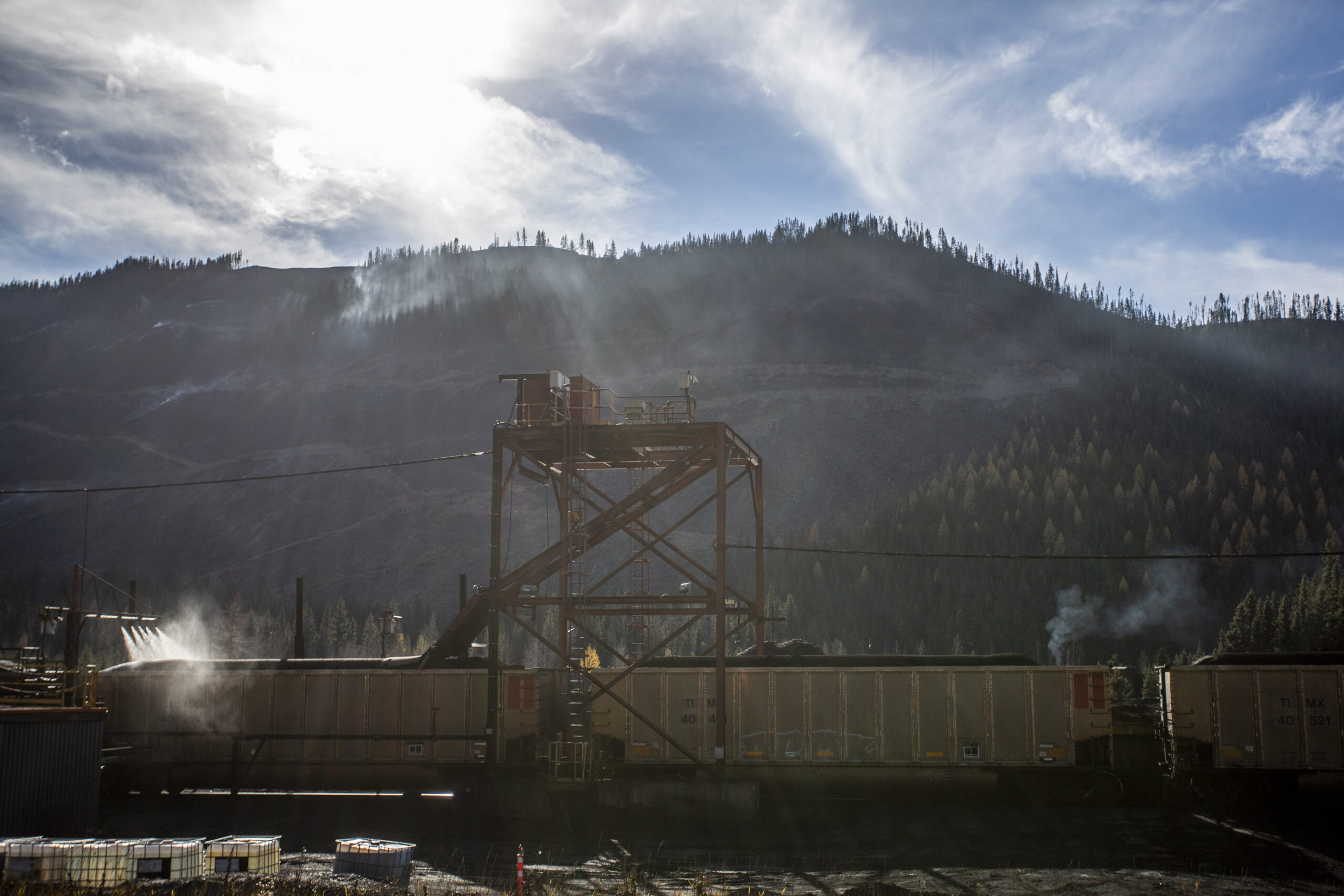
A spokesperson for Environment and Climate Change Canada said federal environmental enforcement officials are also aware of the incident. In a statement to The Narwhal, the spokesperson said “officials have conducted an on-site inspection at Neptune Terminal to verify compliance with the Fisheries Act.”
They “will continue to monitor this matter and if they find evidence of an alleged violation of the Fisheries Act, they will take appropriate action in accordance with the compliance and enforcement policy,” the statement said.
Asked about the leaked video, Menzies says, “It’s hard to know exactly how frequently spills or incidents like this are occurring and are not being reported.”
And it’s not only spills directly to water that are cause for concern. Rao notes, “Any contaminant that lands on a paved surface will make its way into a water body unless it is intercepted or treated.”
The B.C. government says it prioritizes high-risk facilities for inspection, based on their rate of discharge, contaminants in the wastewater and their compliance history. But a review of the province’s natural resource compliance and enforcement database, which includes inspection records dating back to 2017, indicates facilities authorized to release wastewater into Burrard Inlet are not regularly inspected to determine compliance with their authorizations. While the database indicates some facilities have been inspected several times since 2017, it appears others were only inspected once in the past seven years.
The inspections revealed numerous occasions on which companies failed to comply with their wastewater permits.
In April, for instance, the province issued Trans Mountain Corporation a warning letter for repeatedly failing to comply with the wastewater authorization for its Westridge Marine Terminal on the inlet’s south shore. On more than 40 occasions between 2021 and 2023 wastewater concentrations of hexavalent chromium flowing into Burrard Inlet exceeded permissible levels. A carcinogen made infamous by Hollywood’s retelling of the Erin Brokovich story, hexavalent chromium can also cause organ damage in fish and other marine animals.
It’s at Westridge Marine Terminal where crude oil from the Trans Mountain pipeline is loaded onto tankers for its final journey to overseas markets. Tsleil-Waututh Nation has long opposed the Trans Mountain expansion — a $34-billion project owned by the federal government — citing, among other concerns, the devastating consequences of a potential oil spill in Burrard Inlet. With crude oil now flowing through the expanded pipeline system, the associated increase in tanker traffic is added pressure the inlet must bear.
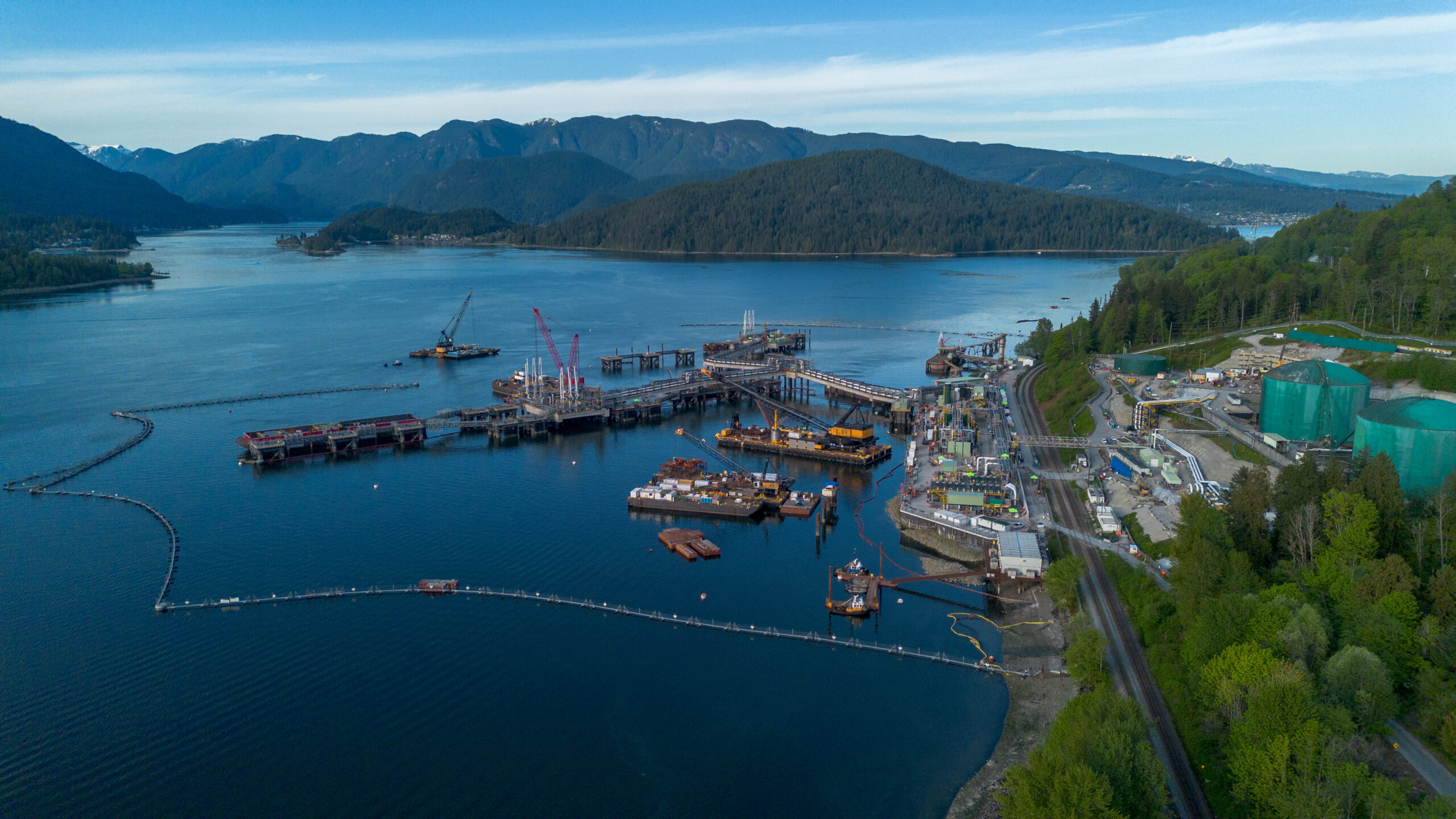
Trans Mountain Corporation did not directly address The Narwhal’s questions about its hexavalent chromium exceedances.
In a statement, a spokesperson for the Crown corporation said, “Trans Mountain manages water onsite according to permit requirements, which includes the use of water treatment where required to ensure compliance with all permits and regulations.” The statement noted the company complies with all reporting requirements.
Regarding the risk of a spill in Burrard Inlet, the spokesperson said, “Concerns about prevention and response to marine oil spill have been thoroughly canvassed and addressed through risk reviews and appropriate mitigation.”
“Marine safety is paramount,” the statement noted, adding that while Trans Mountain does not own or operate tankers, it can deny access to any vessels that fail to comply with standards.
Trans Mountain isn’t the only facility that’s failed at times to meet the requirements of its permit.
In February 2022, the province also issued a warning to Chemtrade Electrochem Inc., a chemical manufacturing and handling company, for failing to comply with the terms of its permit, according to inspection records. On May 6, 2020, the company released more zinc into the inlet than authorized, the records disclose. The company also released water with a higher pH than allowed over the course of almost 45 minutes on Oct. 29, 2020. Finally, the company failed to collect water samples on five days that year, which means its compliance with certain parameters couldn’t be determined.
Chemtrade also received a warning letter from the province in March 2020 for exceeding copper and zinc limits on a mid-November day in 2018, among other issues. The company did not respond to The Narwhal’s request for comment.
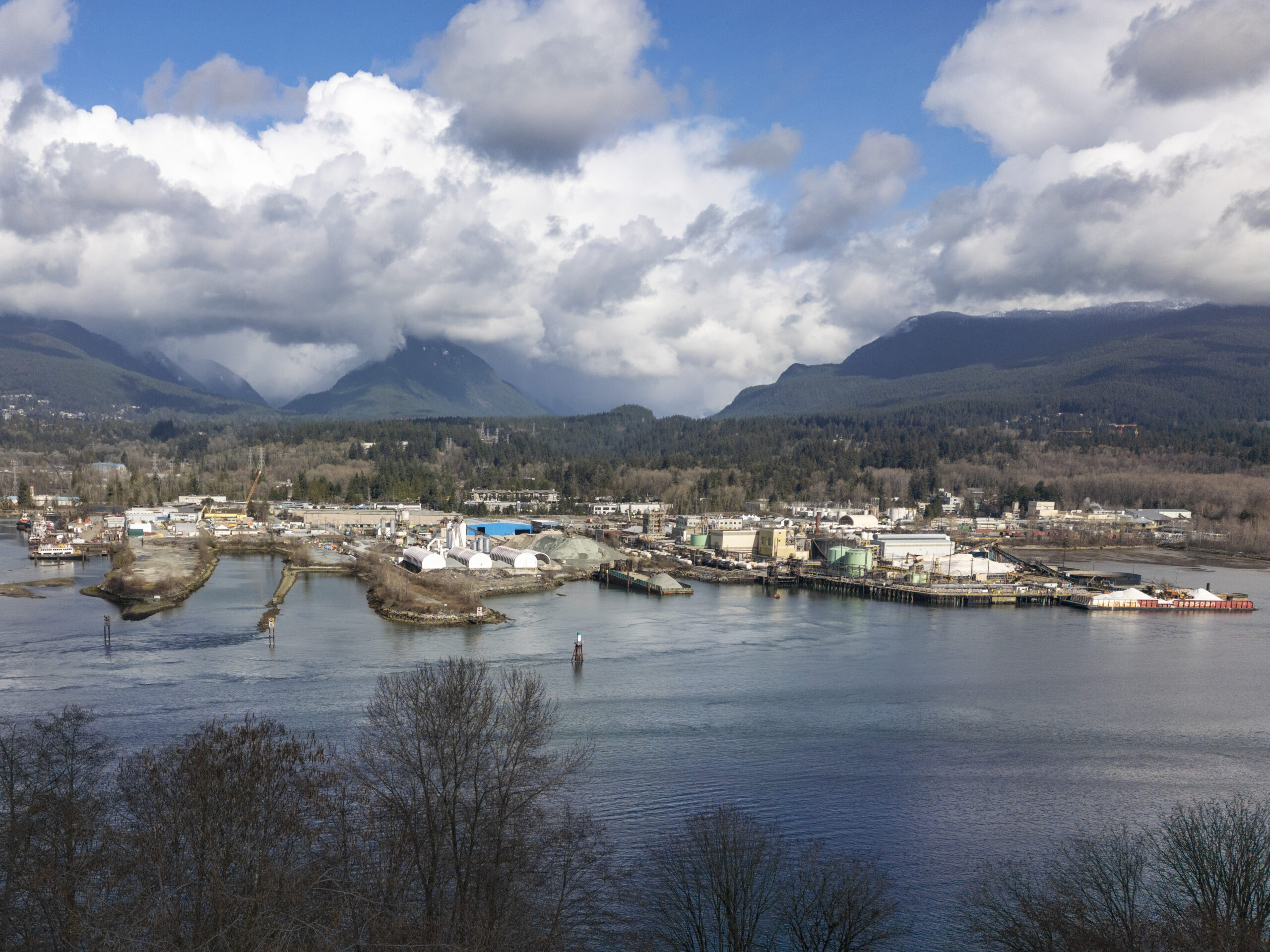
The province has found issues with non-compliance at PKM Terminals, too. During a review of quarterly reports, a B.C. government environmental protection officer found nine instances where the terminal operator released water exceeding allowable levels of total suspended solids and total organic carbon between 2018 and 2019.
And in 2023, Lantic Inc. was fined $32,200 for multiple infractions dating back to 2020 at the Rogers Sugar refinery, including 13 occasions where the temperature of the company’s wastewater exceeded allowable limits and two occasions where it contained too much sediment.
In a statement, Lantic’s chief financial officer JS Couillard said, “Rogers Sugar will not comment on the specifics of the questions.”
Couillard noted the company monitors the water daily and has been conducting “biophysical surveys of its outfall system twice annually since 2017.”
“These surveys, including the latest conducted in November 2023, indicate no environmental risks associated with our operations,” the statement said.
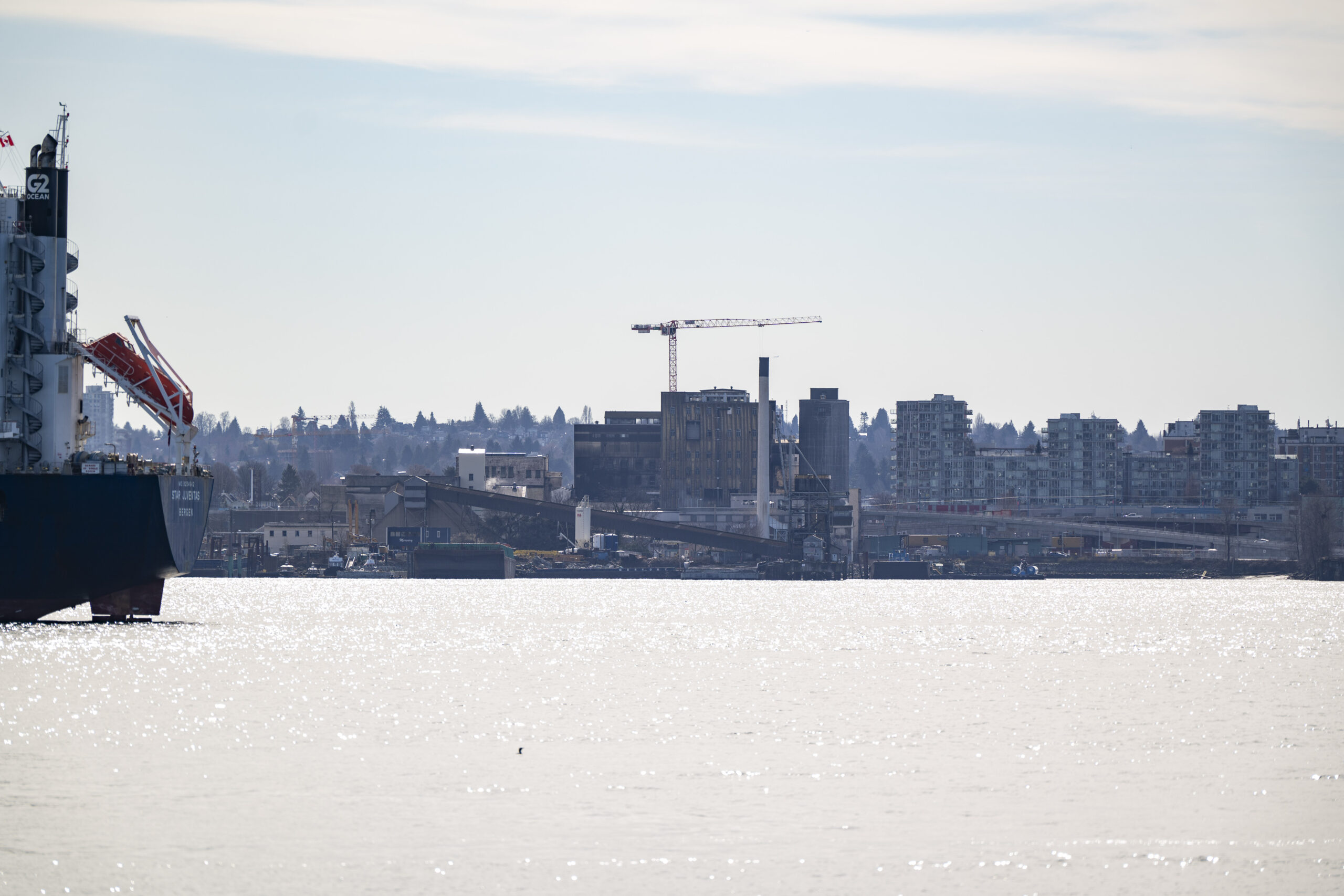
Couillard also noted the company is a member of the Burrard water quality roundtable and “well aligned with its objectives and targets.” Co-chaired by Tsleil-Waututh Nation and the province, the roundtable brings representatives from different levels of government, NGOs and industry together to address water quality issues in Burrard Inlet, such as the development of the new objectives.
Despite industry’s participation on the roundtable, challenges persist. Facilities regularly exceed pollution limits, but often “there are no consequences,” Rao says.
“The individuals that we work with at the province seem to really want to do better, but their systems are so under-resourced,” she says, “they can’t effectively enforce the regulations that exist.”
Tsleil-Waututh Nation’s ultimate goal is to be able to safely harvest abundant wild foods from these waters once again.
The nation is “working hard to revitalize the inlet, to make it healthier,” Deanna George, the Tsleil-Waututh councillor says, seated at a boardroom table in the nation’s administration building, just uphill from the inlet.
“Our wellness is connected to the land,” Gabriel George adds from across the table. “Our people, our language, the land, it’s all interconnected.”
“If Canada and the province are serious about recognizing [the United Nations Declaration on the Rights of Indigenous Peoples], serious about truth and reconciliation, the calls to action, then this is something that they have to reconcile … the incredible damage they’ve done to Tsleil-Waututh territory,” he says.
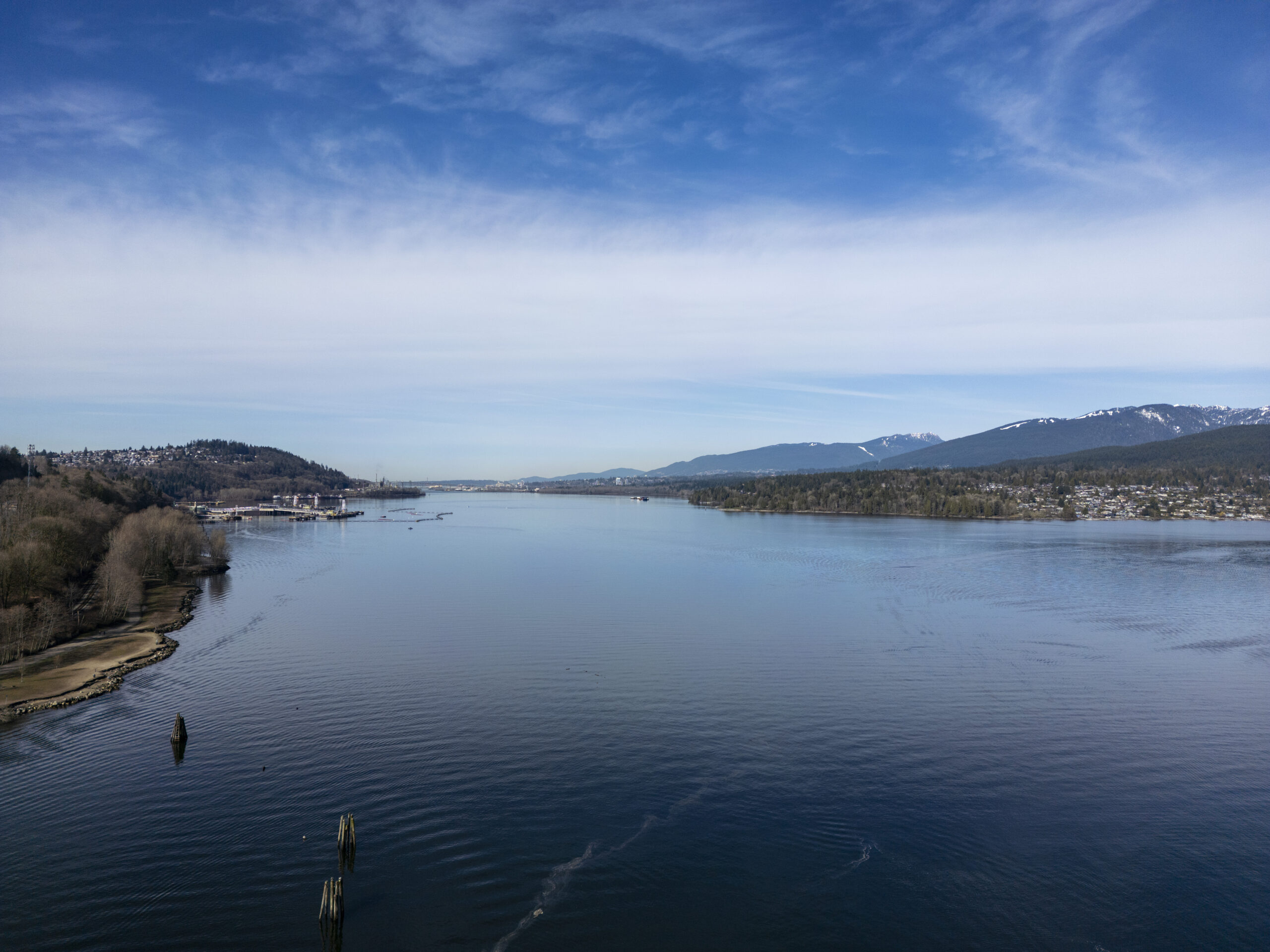
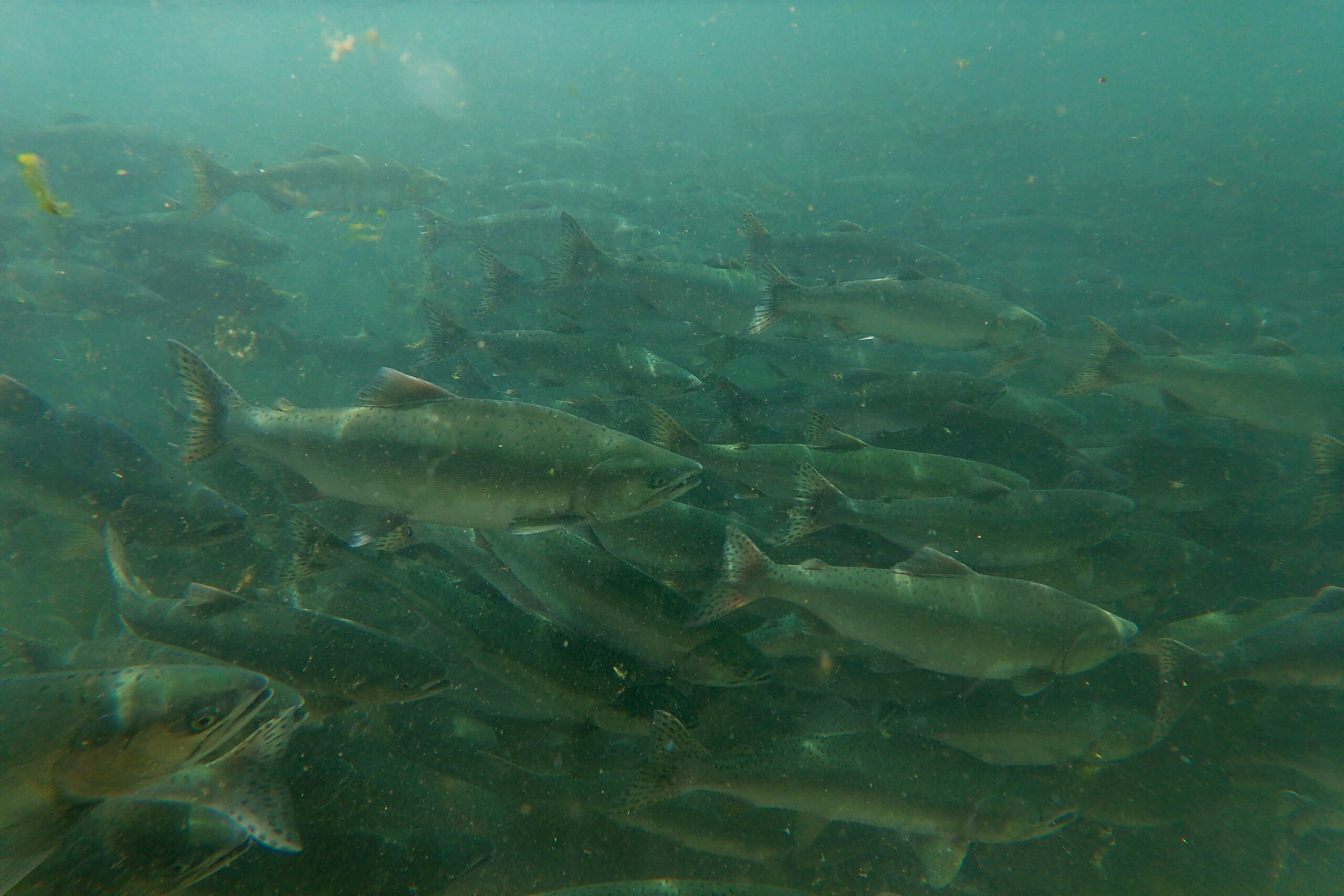
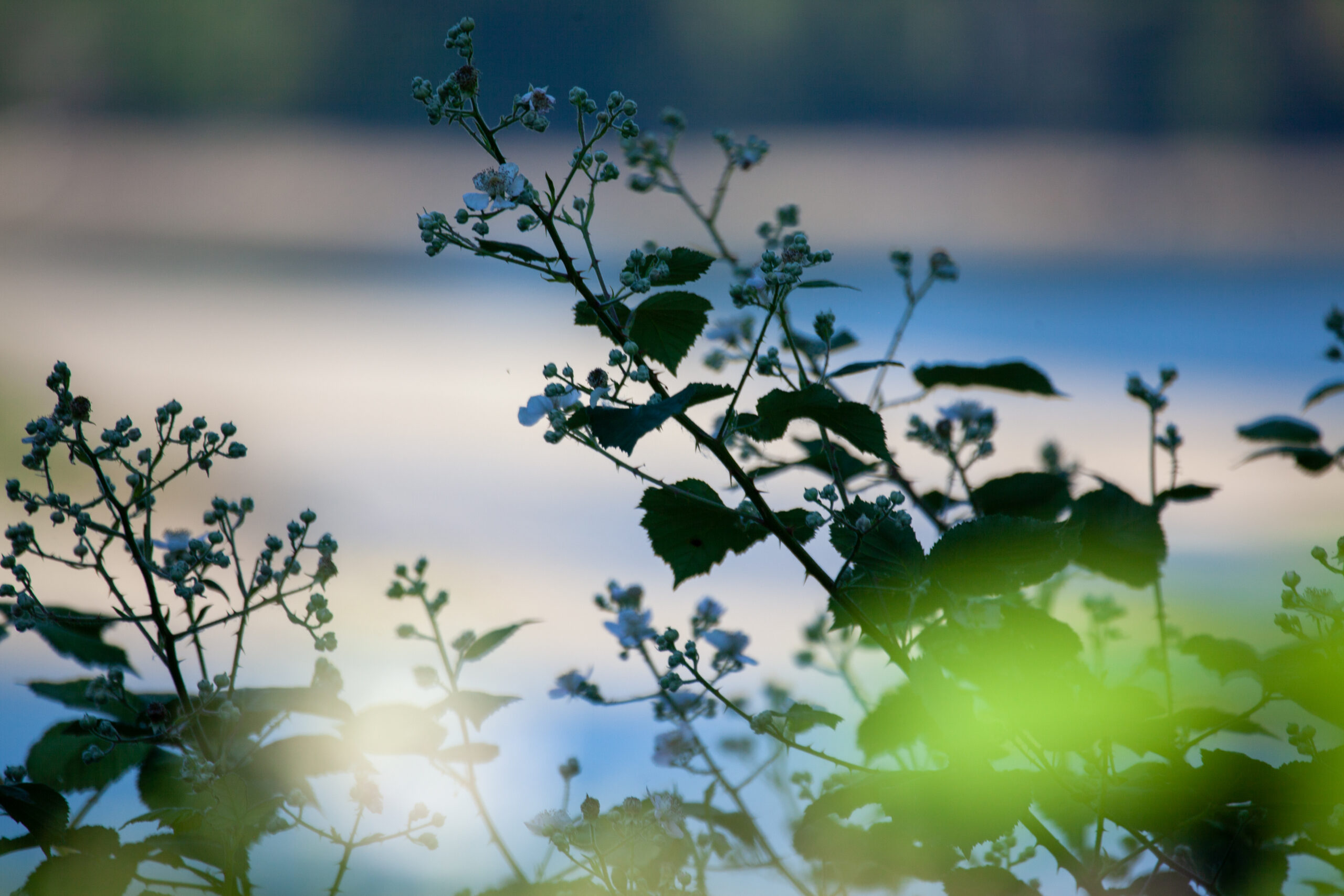
The damage to the inlet is so extensive and complex that cleaning it up isn’t just a matter of stopping the flow of a single source or limiting individual contaminants. There’s also the question of what happens when these contaminants mix.
“This is such a critical knowledge gap,” Giang says, and “it kind of mirrors the way in which we regulate.”
Colonial governments have consistently regulated pollution on a source-by-source basis, with little consideration of cumulative effects. It’s the same with contaminants.
“There needs to be so much more work done both on the research side, but also on the regulatory side to start thinking about these mixtures,” Giang says. “It’s such a known unknown.”
And, it’s not the only one.
New and emerging contaminants are another area demanding more attention, but scientists and regulators are too often stuck playing catch-up, according to Giang.
“We can’t just be focused on the problems of the past,” she says. We also need “to be thinking about the possible contamination of the future.”
A more precautionary approach is needed to ensure new chemicals are safe before they become widely used, she adds.
It’s an issue the federal government is grappling with. Canada is revisiting its approach to chemicals management, Giang says, and that includes figuring out what evidence should be required to demonstrate a chemical is safe before it goes into mass production.
Ultimately, she says it’s easier to prevent pollution in the first place than to clean up persistent environmental contamination.
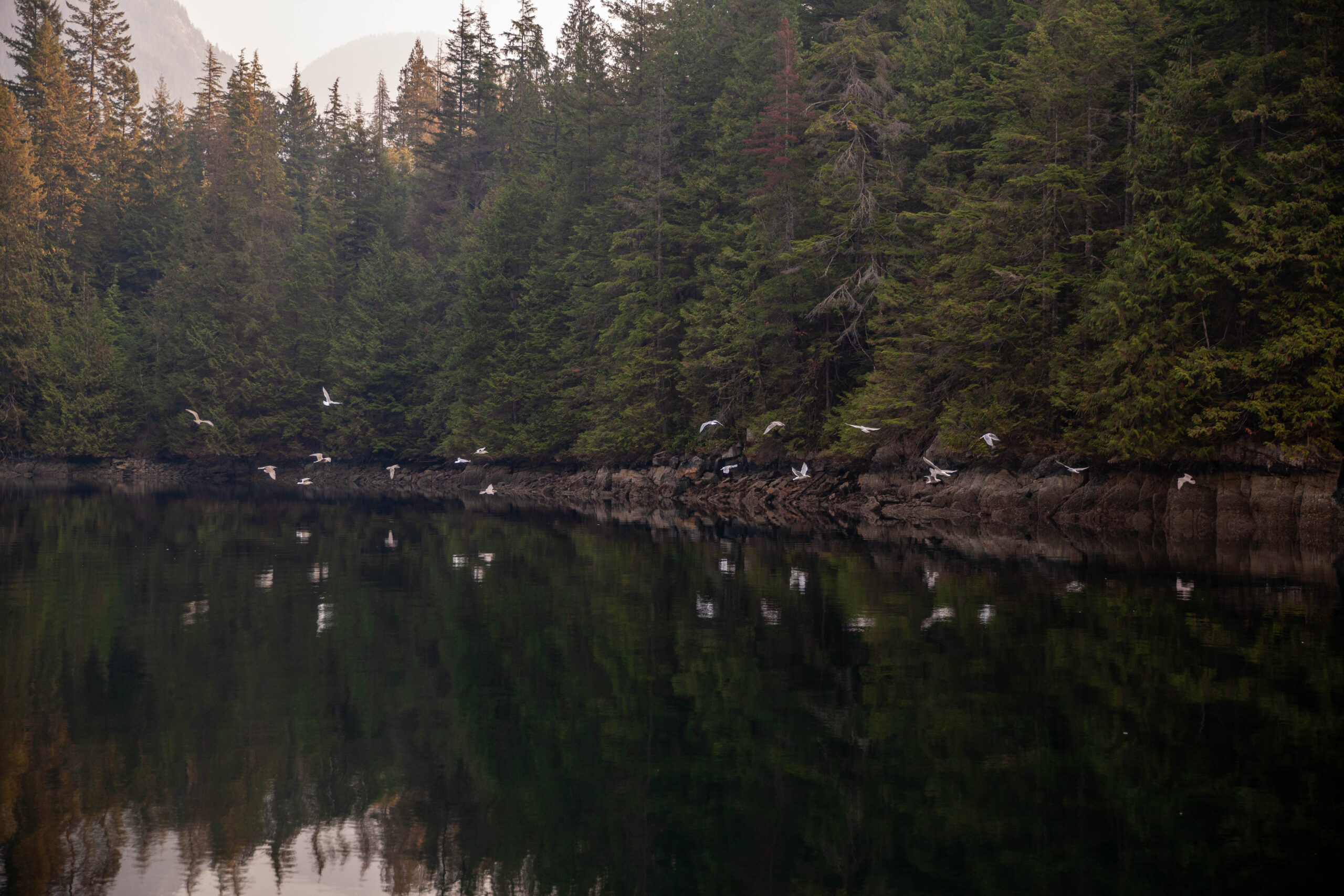
When it comes to Burrard Inlet, Giang says the work Tsleil-Waututh Nation is leading is promising.
“The establishment of these water quality objectives, using this more risk-based approach that recognizes coastal Indigenous lifeways, I think that’s already a really exciting and important step,” she says — one that could serve as a model for other polluted waterways.
For Tsleil-Waututh Nation, the issue is deeply personal.
“It’s our grandmother, something we care for, something that’s alive,” Gabriel George says of the inlet.
“It’s like air,” Deanna George adds, “you need it to survive.”
Content for Apple News or Article only Get the inside scoop on The Narwhal’s environment and climate reporting by signing up for our free newsletter. This...
Continue reading
An Alberta government-commissioned report suggests oil and gas site companies may be able to install...

This story about a lawsuit involving First Nations in northern Ontario has deep roots — in...

At a crucial point in their research, biologists are scrambling to find new support for...
